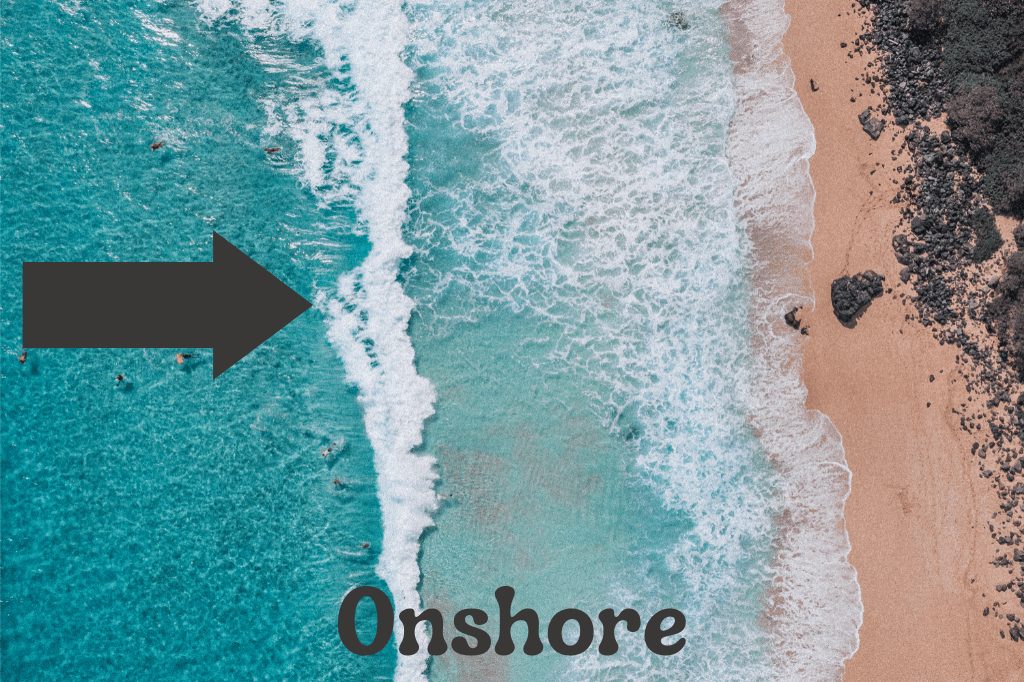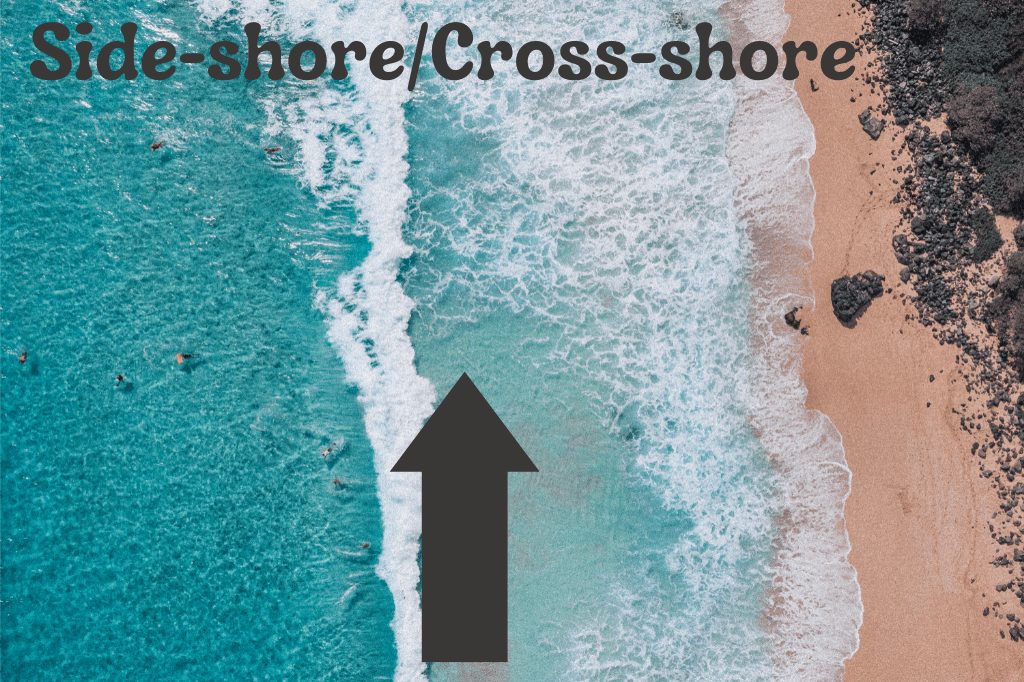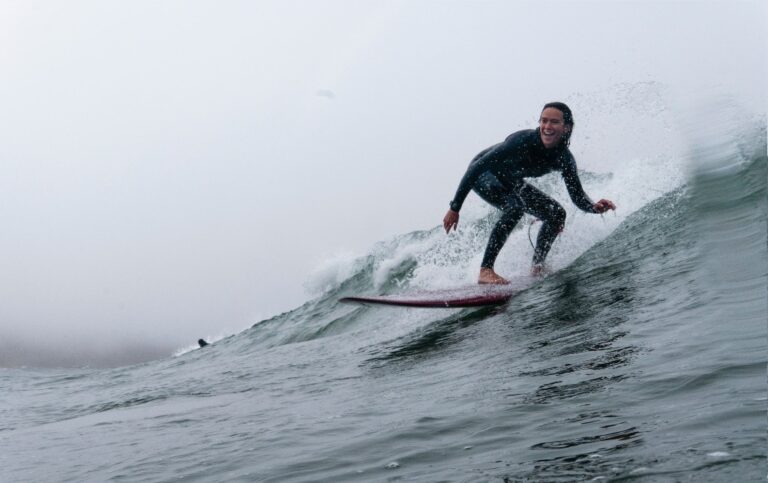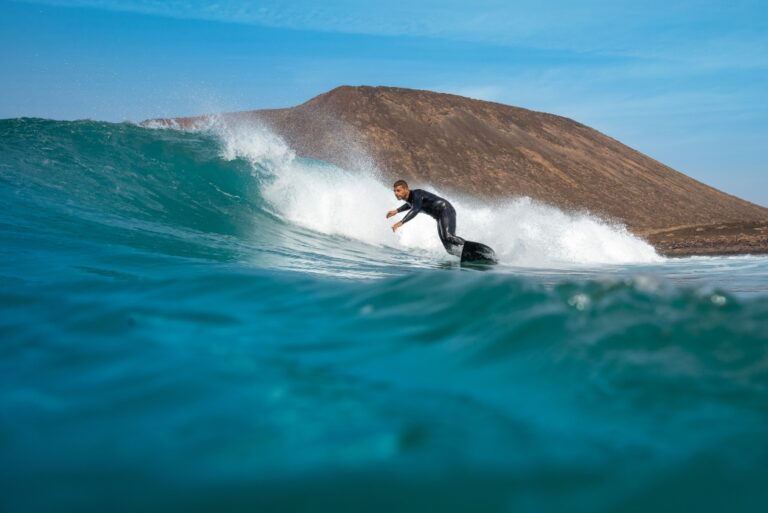The Best Time to Surf: Wind, Tides and Crowds
Have you ever wondered, “When is the best time to surf?” While many surfers might tell you it’s in the mornings, the answer isn’t quite that simple. There are several different factors that affect the best time to surf, and while surfing conditions are genuinely best in the mornings, that isn’t always the case! And it’s important to understand why the waves are good, so you can give yourself the best shot at paddling out when the waves are good.
In this post, we’re going to discuss the best time to surf and the reasons why, so you can give yourself the best chance at surfing when the waves are best.
Factors that affect surfing conditions
Here are some of the main factors that affect the surfing conditions, and influence when the best time to surf is:
Wind
Wind is a major factor that influences when the best time to surf is. However, not all wind is bad wind. When you’re talking about wind and surfing, there are generally two different types of wind: offshore and onshore wind.
Offshore wind is when the wind is blowing from the land to the sea. When the wind is offshore, it blows towards the waves as they break, which delays them breaking and creates more of a face for surfers to ride on. Not all offshore wind is good for surfing though- if the offshore wind is too strong, in the 20mph+ ballpark, you’re going to have a very rough time riding waves as your board fights the wind to drop in.

Onshore wind is when the wind is blowing from the sea to land, and it has the opposite effect. Onshore wind causes waves to break sooner than then normally would, and creates a crumbly, messy wave face that is difficult to ride.

In addition to offshore and onshore wind, there is also Cross-shore wind, or Side-shore wind. This is pretty self explanatory- these winds blow parallel to the shore, from either direction. Cross-shore/side-shore wind isn’t as bad for surfing as onshore wind, but it isn’t as good as offshore.

So what do the different wind directions have to do with the best time to surf?
Well, the wind in the mornings is usually offshore, which makes for the best surfing conditions! This is a huge reason why most surfers surf in the morning.
The wind changes from offshore to onshore in the late mornings due to the sea breeze, a local wind caused by the temperature difference between the land and the sea. As the land heats up faster than the sea, a low-pressure area is created, and air from the sea rushes in, causing the offshore wind to switch to onshore. This change can impact the quality of the waves, as onshore winds can create choppy waves, while offshore winds can create clean, well-defined waves.
Sunset is another popular time to surf, because the wind switches back to offshore in the evenings due to the cooling of the land, which creates higher air pressure over the land and lower pressure over the sea. This leads to an offshore breeze that can create favorable conditions for surfing in the evenings.
However, every once in a while, the wind is offshore all day long! This lends to great surfing conditions all day long!
To summarize: The best time to surf is when the wind is offshore. Generally, this is in the mornings and evenings.
** This article contains affiliate links. As an Amazon Associate, I earn from qualifying purchases. Meaning, at no extra cost to you, I earn a small commission anytime you purchase any of the linked products. Thanks for your support of Gathering Waves!
Tides
While the wind is a very important factor that influences the best time to surf, it isn’t everything. The tides are another very important factor. The best time to surf is going to typically be whenever the tides are most favorable for surfing at your local break. Generally speaking, the tide is best for surfing at mid-tide. However, each surf break is different, and I recommend researching your local surf break to see when the best tide is.
If you surf when the tide is too low, the water is shallower, and the waves break very steep, and close to the shore. While this might be good for a few surf breaks, generally it isn’t ideal.
On the other hand, surfing at high tide usually means the waves are going to be much softer. High tide usually creates better surfing than low tide, but once again- it depends on your local break.
To find out the best tide conditions for your local break, I recommend asking some of the local surfers, or making a quick google search.
Crowds

Surfing when it’s crowded is a challenge, especially when you’re just starting out. Therefore, for some, the best time to surf is going to be when it’s least crowded! While this might depend on your local break, the lineup is usually busiest from 9 am- 11 am, and for sunset. If you’re looking to beat the crowds, the best time to surf is going to be dawn patrol- right when the sun comes up.
Or, you can paddle out in the middle of the day- this is when crowds will be at their lowest- although it might be onshore.
Best time to surf: Morning vs. Midday vs. Sunset
Pros of surfing in the morning:
- Usually offshore winds
- You can paddle out before work or school
Cons of surfing in the morning
- Unless you go for dawn patrol, this is usually the most crowded time to surf.
Pros of surfing midday:
- Usually the least crowded
Cons of surfing midday:
- Work/school obligations
- Heat: if you’re surfing somewhere tropical like Costa Rica, the midday heat is pretty piercing. If you paddle out at this time, you’ll want some good reef safe sunscreen to protect your skin.
Pros of surfing sunset:
- It’s really beautiful
- The wind often switches back to offshore by sunset
Cons of surfing sunset:
- Sometimes very crowded
- In the winter when the sun sets early, you might not have time to surf before sunset.
Best time to surf: Seasonal Considerations
While the seasons don’t have quite as big an effect on the best time of day to surf as the wind, tides, and crowd, they definitely do make a difference in some ways:
- In the winter, when the days are shorter, the wind doesn’t always switch to offshore early enough to leave enough daylight for a sunset session.
- In the winter, depending on where you are, the heat of midday might be a reason to paddle out in the middle of the day, to avoid the early morning chill
- Wildlife: It’s a good idea to be aware of the wildlife patterns in your area. Especially migration patterns of sharks. For example, I grew up on the central coast of California, surfing in SLO, and peak numbers of Great White Sharks in the area occur during the warmest months, usually in August and September. While I usually love being one of the last people in the water during a sunset session, during those months in California I don’t like to stay out too late!
FAQs about the best time of day to surf
Why do surfers surf in the mornings?
Surfers usually surf in the mornings because it best fits their schedule, and because this is when the wind is offshore, creating optimal surf conditions.
What tide is best for surfing?
Generally speaking, mid-tide is best for surfing. However, it depends on your local break!
When is the best time to surf?
For most surfers, morning is the best time to surf. It fits with their work schedules, and is when the wind is best. However, the best time to surf really depends on what the conditions are like at your offshore break. Offshore winds + optimal tides + no crowds usually equates to the best time to surf. Personally, my favorite time to surf is right in the middle of the day when there is no crowd, the wind is offshore, and the tide is perfect at my local break- which is currently Playa Guiones in Costa Rica.
Final thoughts on the best time to surf
In conclusion, the best time to surf is influenced by several factors such as wind, tides and crowds. Wind, particularly offshore, is a major factor that creates favorable surfing conditions, with morning and sunset being the best times due to the change from offshore to onshore winds. Mid-tide is generally the best tide condition to surf, although this varies heavily from one surf break to another. To avoid crowds, surfing during dawn patrol or in the middle of the day can be ideal. Ultimately, the best time to surf is when the conditions are ideal for your skill level and preferences. Understanding the different factors that affect the waves can give you an edge when planning your surfing sessions, and help you have the best possible surf sessions!





